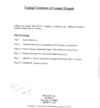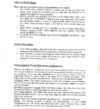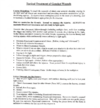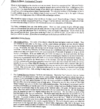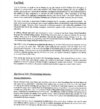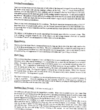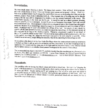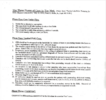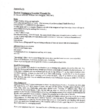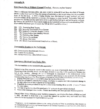Good morning, all, and sorry for the delay in responding. Super interesting thread!!
First, a big thank you to 363Medic and Chuckman for the TQ information. I learned a lot from that!!! My opinion has changed somewhat after reading what you posted here. That said, my concern is in untrained hands. I agree that compartment syndrome, etc, are rare complications. The point of my previous link was to show lay people what can go wrong with a tourniquet (situation) even in trained hands. In a life or limb situation, obviously, a tourniquet is going to be appropriate....but remember that what looks like a lot of blood to a layperson might not be a lot of blood to a medically trained person. Because TQ's are technically easy to apply, I worry that Joe Rambo whose only training is the insert that came with the TQ might be quick to jump to applying a TQ that is neither necessary nor indicated, and thus cause a problem, because, hey, who doesn't want to be the hero who saved someone's life? Understandable benevolence, but possibly misguided and not without other considerations, that's all.
Chriselalto: "If a trained medical personnel(off duty) is on an accident scene rendering aid, they are protected from law from litigious investigation." Not always true. The trained medical personnel still must be working within their scope of training and licensure, and their interventions still must pass the "reasonably prudent" test. For example, I'm an experienced RN with a strong background in trauma/ER/critical care who has never been trained or licensed to independently place a chest needle. Do I recognize Beck's Triad as a suggestion that a cardiac tamponade might be occurring? Yep. Can I look at a situation and consider that the mechanism of injury might lend itself to a possible cardiac tamponade? Yes to that too. Do I have an understanding of human anatomy that might be a step past what an untrained person has? Probably. But if I place a chest needle at the scene of an accident and cause further damage, because I am working outside of the scope of my training and license, I could be sued and further, my medical malpractice insurance would not cover me. Unfortunate, but true. As a medical person, I am held to a higher standard of "reasonably prudent" than a non-medical person. A "reasonably prudent nurse" would not blindly stick a needle into someone's chest at the scene of a car accident, no matter what else was going on, because I am fully aware (more so than the non-medical person) of what could go wrong with that.
I highly encourage medical training that matches the scenario that someone might find themselves in...what we learned in the military applies to battlefield situations where help might be hours to days and a helicopter flight away and might not be fully relevant to an accident at the local gun range. It's not just fear of lawsuits that may stop a medical person from intervening. It's important to remember that "do something" is not always better than "do nothing" in a given situation, particularly if "do something" could cause further problems. It's all in context, and part of "context" is the training of the person doing the intervention as well as the specific situation.
Thank you for your kind words, and your perspective. I have been in the trauma biz for almost 33 years in a variety of capacities, and for certain when I started in EMS tourniquets were verboten, based on both myth and dated information. The winds really shifted after the 'Blackhawk Down' incident in October, 1993; it was after that the military created the Committee for Tactical Combat Casualty Care (CoTCCC), which was the driving and guiding force behind implementing new trauma care standards. Pre-GWOT TCCC was a SOF thing (Special Operations Forces); after GWOT TCCC was disseminated to every person who put on a uniform, with varying 'levels' depending on job (i.e., infantrymen got slightly different training than, say, someone who worked admin), and the constant for all personnel and all courses were the application of a TQ and the use of hemostatic dressing and wound packing. Medical personnel, of course, received 'more better' training. TCCC is partly medical training, but also largely tactics; i.e., when to do something and when not to do something. But they ARE trained.
Per previous posts with
@363medic , obviously no one is going to do a double blind prospective RCT , so all the data is retrospective and looking at documentation and case studies. A few of the determinants which solidified TQs as 'the' go-to treatment of extremity bleeding was a) leading cause of death was preventable hemorrhage, b) ease of application, and c) trends of lethal injuries (because of body armor, mostly extremity). The medical buy-in was that TQs placed at the POI could be off fairly quickly in higher-echelon medical facilities with APPs and physicians. What we learned was that TQs could actually stay on for hours (sometimes up to 24) with no detrimental effects to the limb.
Parallel to the data coming out of GWOT, we had civilian incidents, the watershed event which led to the prevalence of TQs in the civilian pre-hospital environment was Sandy Hook. That event led the American College of Surgeons to create Stop the Bleed for non-medical folks (
https://www.stopthebleed.org/our-story/), at the same time, pre-hospital providers started training in and carrying TQs; for everyone the typical protocol is 'direct pressure, TQ, pack the wound.' Historically the military and EMS had hemostatic dressings like QuikClot, etc., but data is showing that there really is no statistical benefit to those over traditional dressings.
So between the military and the ACS we've learned there really is no clinical downside to TQs (except not tight enough, which is the number 1 cause of them not working), but there is a downside if not used. Of course, best-case is whoever places a TQ is trained to do so. Fortunately the downside of incorrect placement is not as bad as the downside of trying to do a needle cardiocentesis when you have never been trained. There are hundreds upon hundreds of articles in the literature regarding the efficacy.
I agree with the idea of doing 'something' is not always better than doing 'nothing', especially with invasive procedures (even with trained personnel in procedures that are high acuity/risk and low volume), but with pre-hospital application of TQs, that appears to not be an issue. I also agree that I would not want someone untrained to apply a TQ for a variety of reasons, most of which you articulated. But I don't know that it's the end of the world if that happened. I also think that would be a relatively low probability event.
I don't know where you work; please check out Stop the Bleed (with your background you can be an instructor).
A lot of folks on the forum know my background, which is really immaterial other than to say I have a passion for trauma care. I would be delighted to discuss trauma stuff further. I know a lot of guys here are bored of what I have to say lol.
Charles




